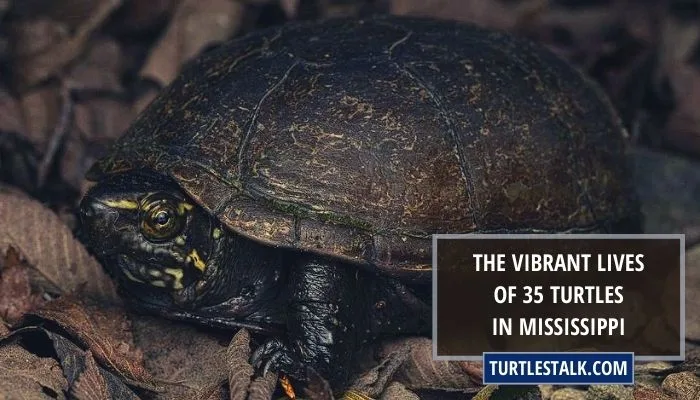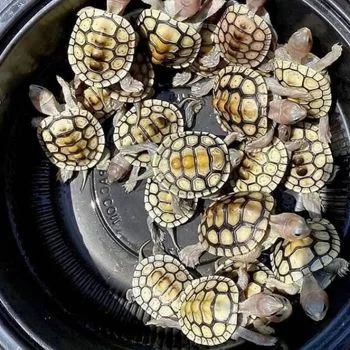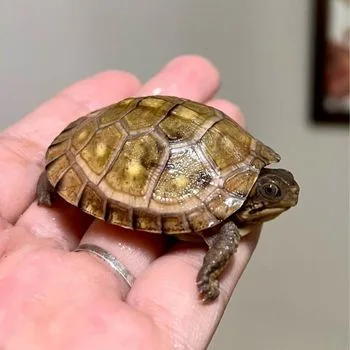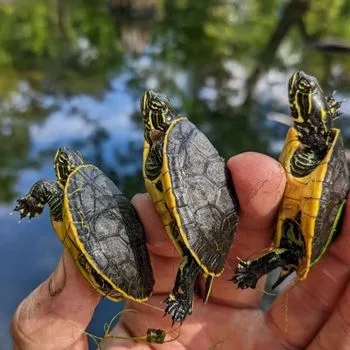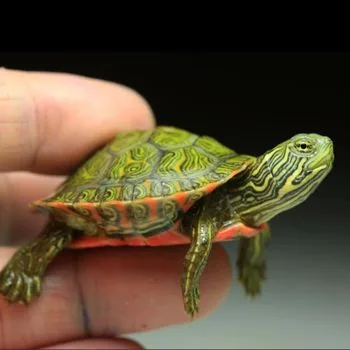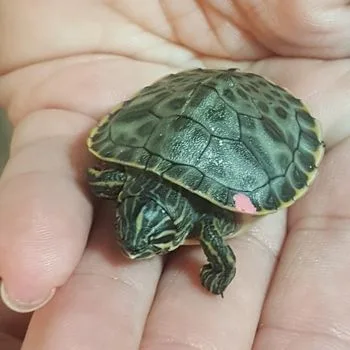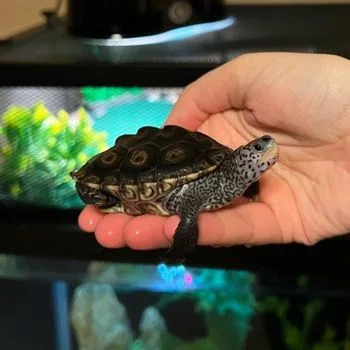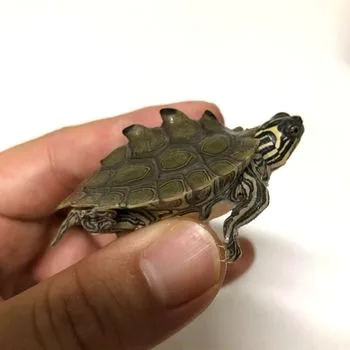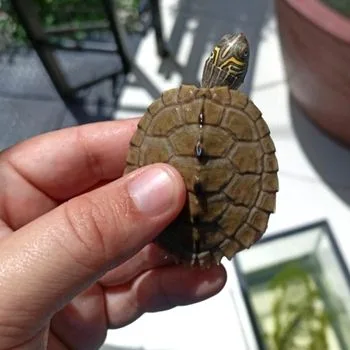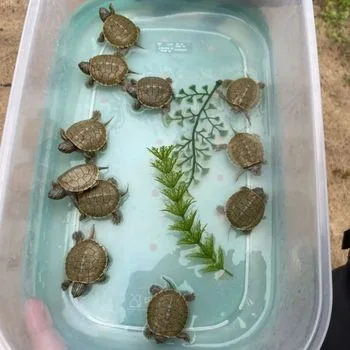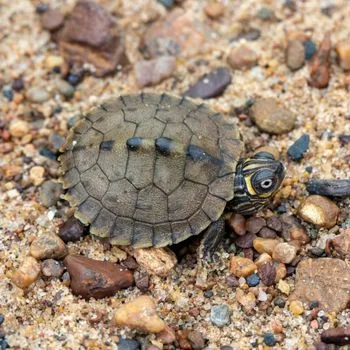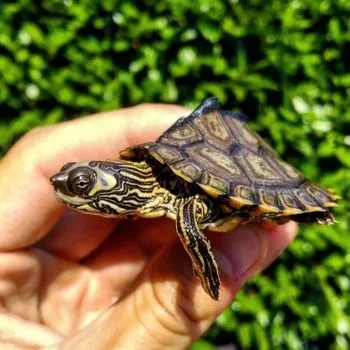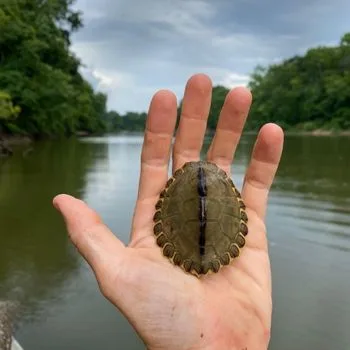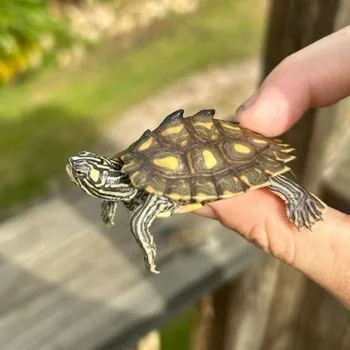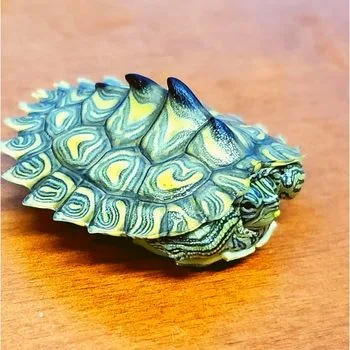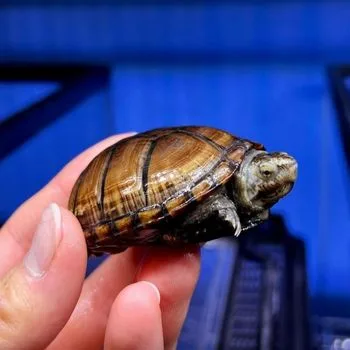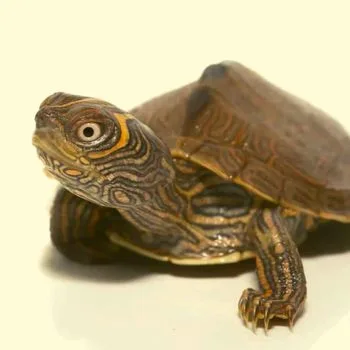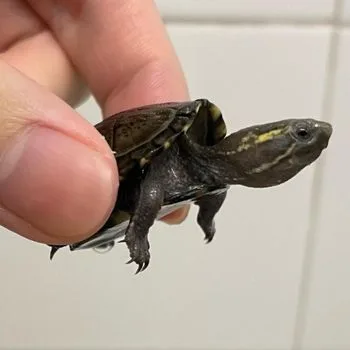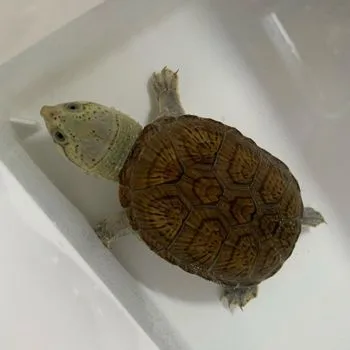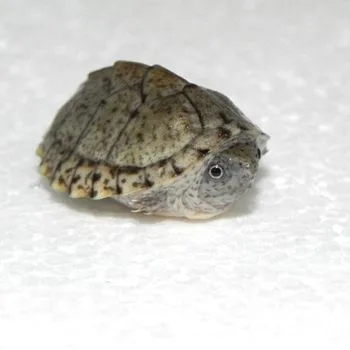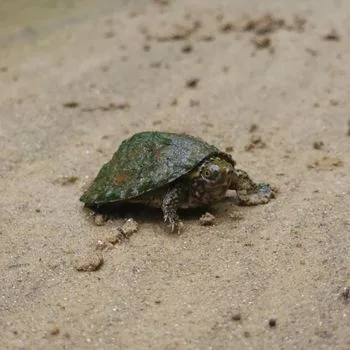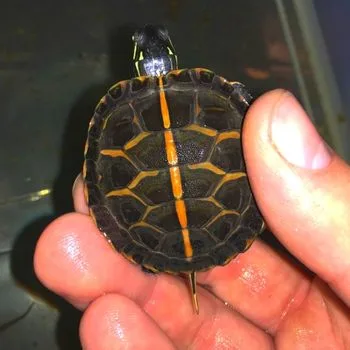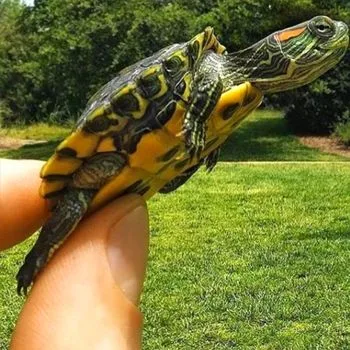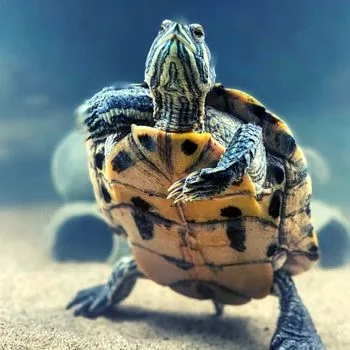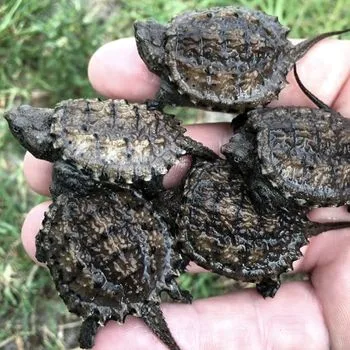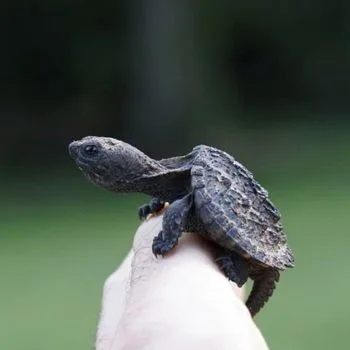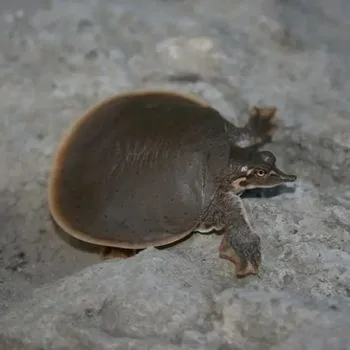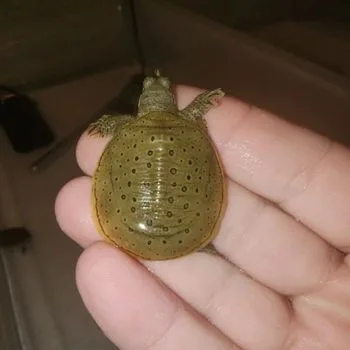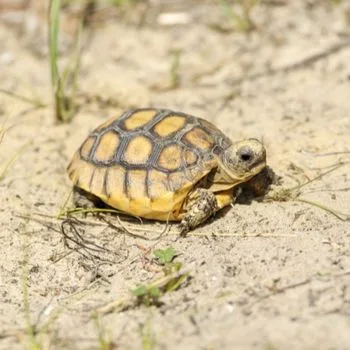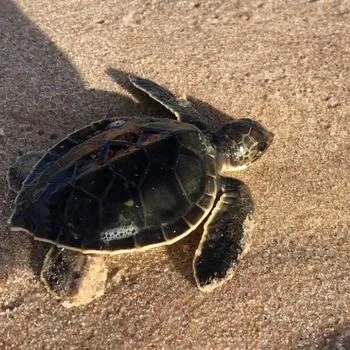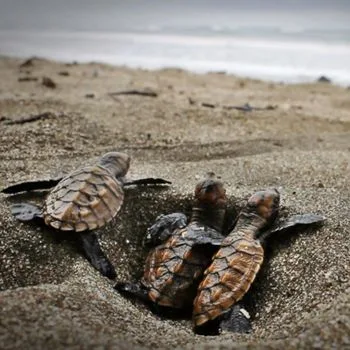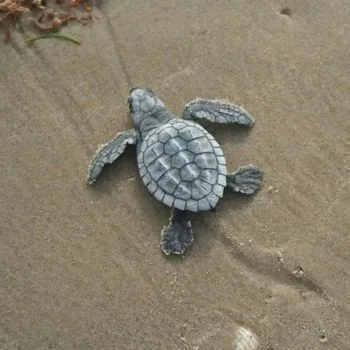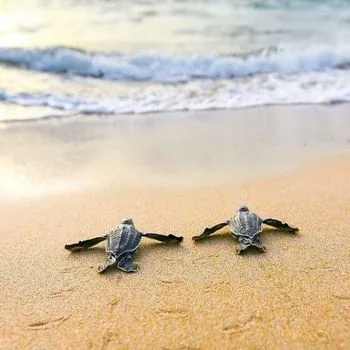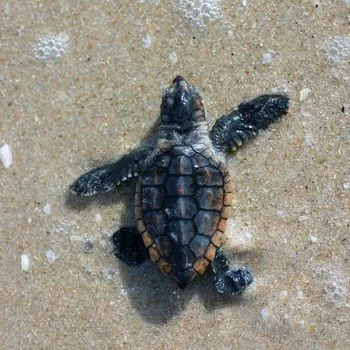The Vibrant Lives of 34 Turtles in Mississippi
Ah, Mississippi, a state of diverse wildlife and natural beauty, where the rivers and wetlands are teeming with life, including a variety of turtles. In fact, there are no less than 34 species of turtles found in this great state, each with their own unique characteristics and adaptations to survive in their respective habitats.
From the large and impressive Alligator Snapping Turtle, which can weigh up to 220 pounds and has a jaw powerful enough to crush a human bone, to the smaller and more colorful Painted Turtle, with its bright red and yellow markings and distinctive shell pattern, the turtles of Mississippi offer a fascinating glimpse into the world of reptilian life.
Whether basking on a log in the sun, or swimming in the murky waters of the Mississippi River, the turtles of Mississippi are a vital part of the state’s natural heritage, and a fascinating subject of study for biologists and naturalists alike.
| # | Name | Details | Image |
| 1 | Eastern Box Turtle (Terrapene Carolina) |
| 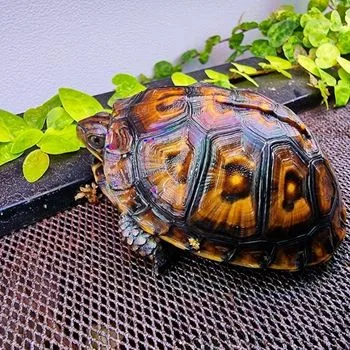 |
| 2 | Gulf Coast Box Turtle (Terrapene Carolina Major) |
| 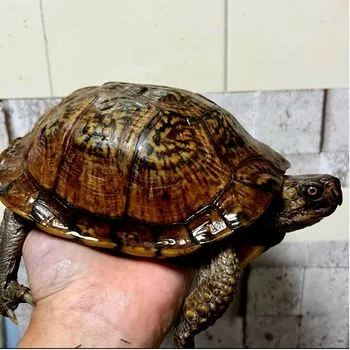 |
| 3 | Three-toed Box Turtle (Terrapene Carolina Triunguis) |
| 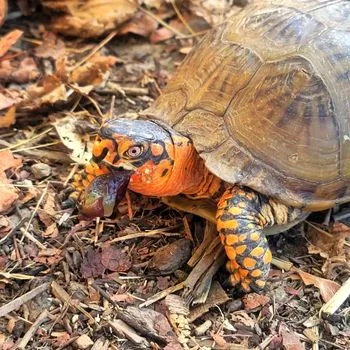 |
| 4 | Chicken Turtle (Deirochelys Reticularia) |
| 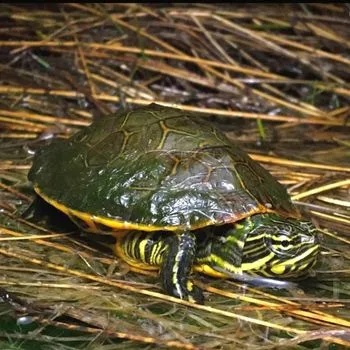 |
| 5 | Alabama Red-bellied Turtle |
| 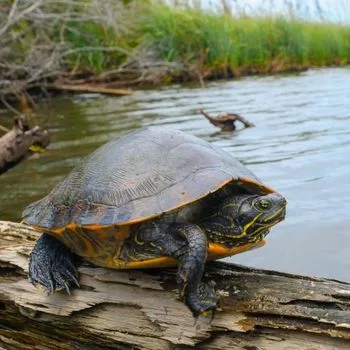 |
| 6 | Eastern River Cooter (Pseudemys Concinna) |
| 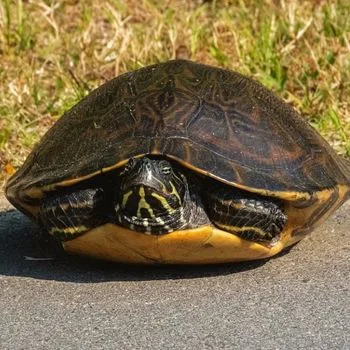 |
| 7 | Diamondback Terrapin (Malaclemys Terrapin) |
| 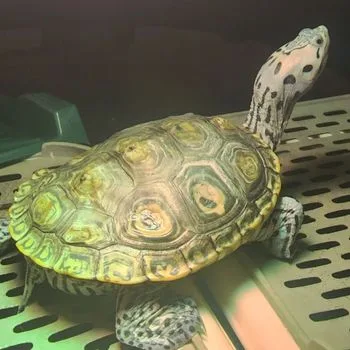 |
| 8 | Black-knobbed Map Turtle (Graptemys Nigrinoda) |
| 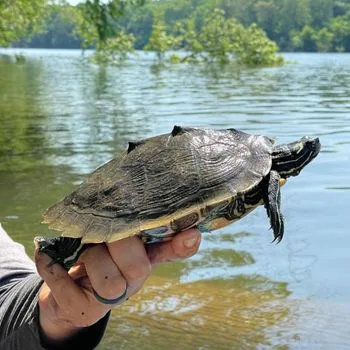 |
| 9 | Mississippi Map Turtle (Graptemys Pseudogeographica Kohnii) |
| 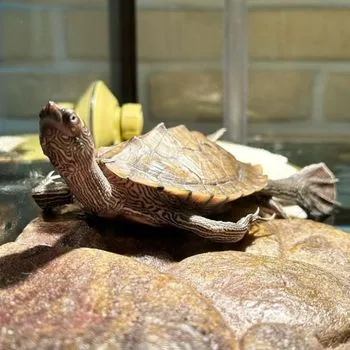 |
| 10 | Northern Map Turtle (Graptemys Geographica) |
| 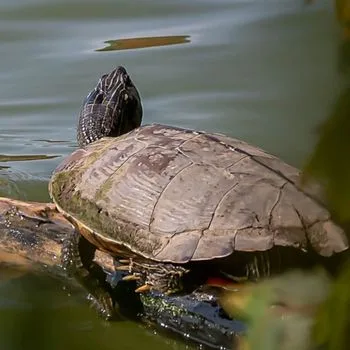 |
| 11 | Ouachita Map Turtle (Graptemys Ouachitensis) |
| 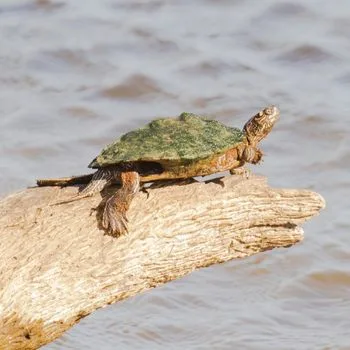 |
| 12 | Pascagoula Map Turtle (Graptemys Gibbonsi) |
| 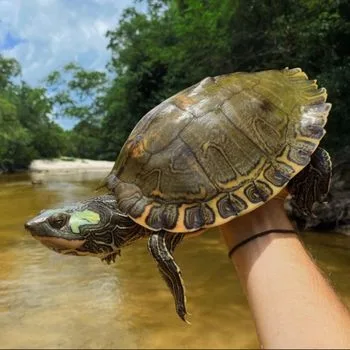 |
| 13 | Pearl River Map Turtle (Graptemys Pearlensis) |
| 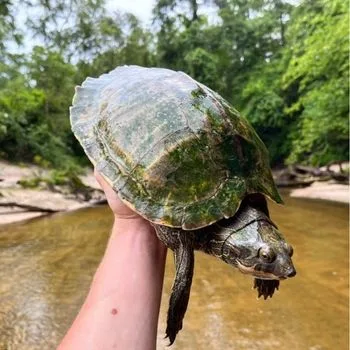 |
| 14 | Ringed Map Turtle (Graptemys Oculifera) |
| 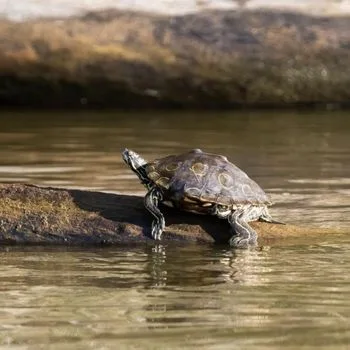 |
| 15 | Yellow-blotched Map Turtle (Graptemys Flavimaculata) |
| 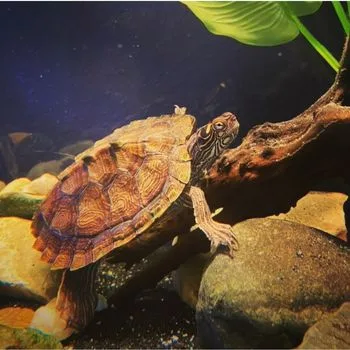 |
| 16 | Eastern Mud Turtle (Kinosternon Subrubrum) |
| 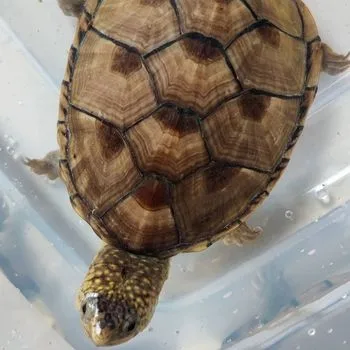 |
| 17 | Mississippi Mud Turtle (Kinosternon Subrubrum) |
| 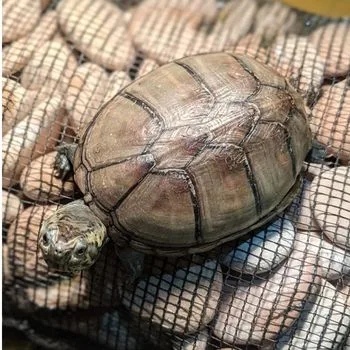 |
| 18 | Common Musk Turtle (Sternotherus Odoratus) |
| 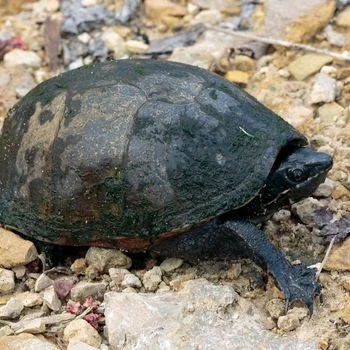 |
| 19 | Loggerhead Musk Turtle (Sternotherus Minor) |
| 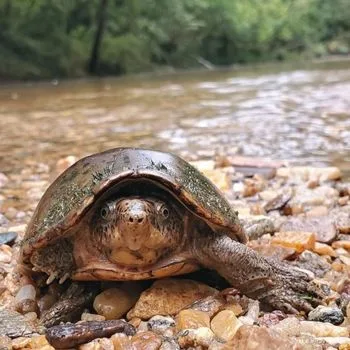 |
| 20 | Razor-backed Musk Turtle (Sternotherus Carinatus) |
| 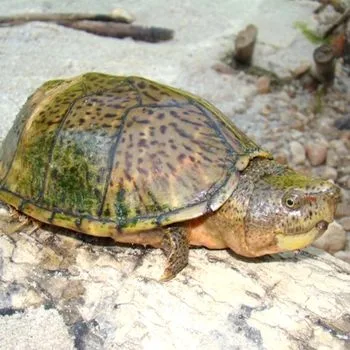 |
| 21 | Stripe-necked Musk Turtle (Sternotherus Minor peltifer) |
| 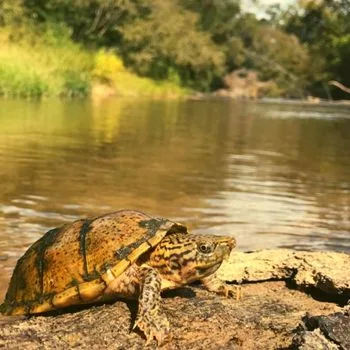 |
| 22 | Southern Painted Turtle (Chrysemys picta) |
| 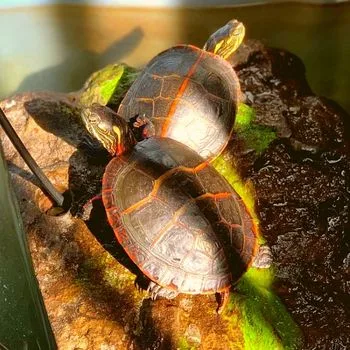 |
| 23 | Red Eared Slider (Trachemys Scripta Elegans) |
| 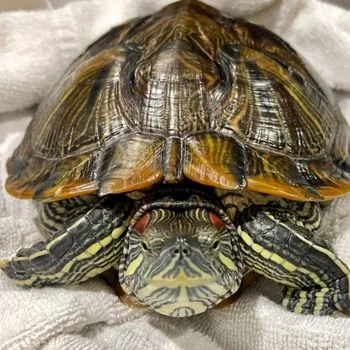 |
| 24 | Yellow-bellied Slider (Trachemys Scripta Scripta) |
| 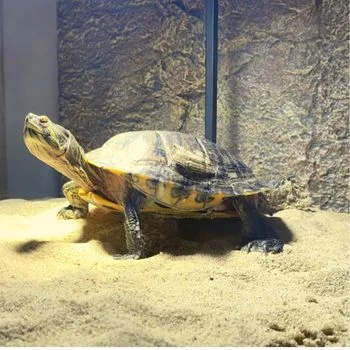 |
| 25 | Alligator Snapping Turtle (Macrochelys Temminckii) |
| 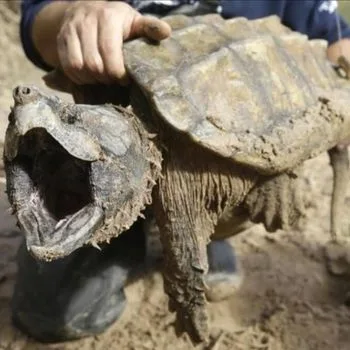 |
| 26 | Common Snapping Turtle (Chelydra serpentina) |
| 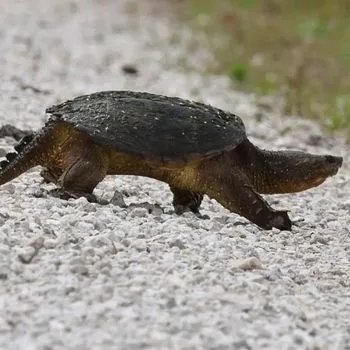 |
| 27 | Gulf Coast Smooth Softshell (Apalone Spinifera Aspera) |
| 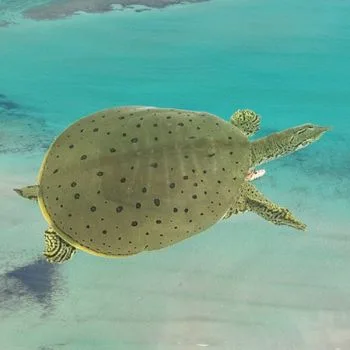 |
| 28 | Gulf Coast Spiny Softshell (Apalone Spinifera Aspera) |
| 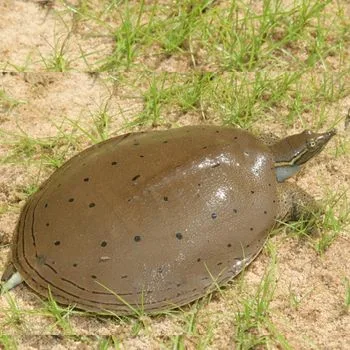 |
| 29 | Gopher Tortoise (Gopherus Polyphemus) |
| 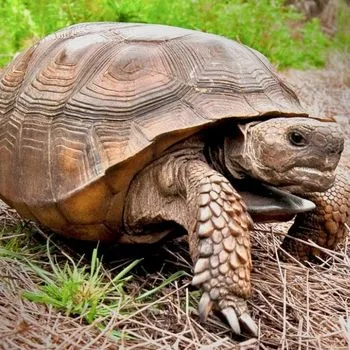 |
| 30 | Green Sea Turtle (Chelonia Mydas) |
| 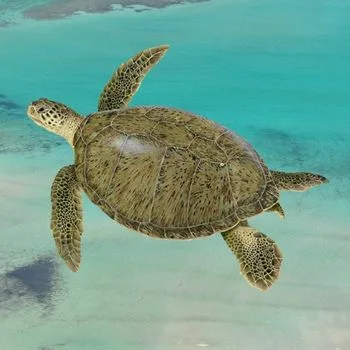 |
| 31 | Hawksbill Sea Turtle (Eretmochelys Imbricata) |
| 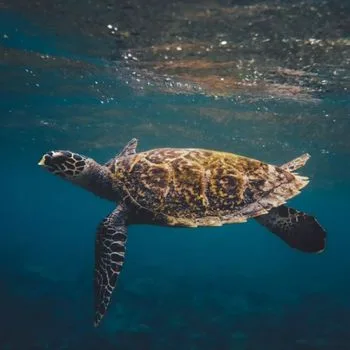 |
| 32 | Kemp’s Ridley Sea Turtle (Lepidochelys kempii) |
| 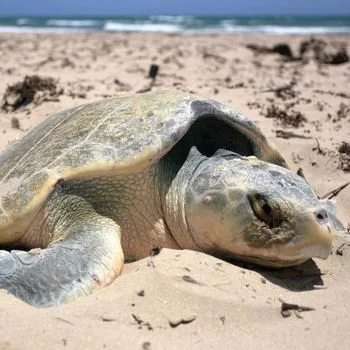 |
| 33 | Leatherback Sea Turtle (Dermochelys Coriacea) |
|  |
| 34 | Loggerhead Sea Turtle (Caretta Caretta) |
| 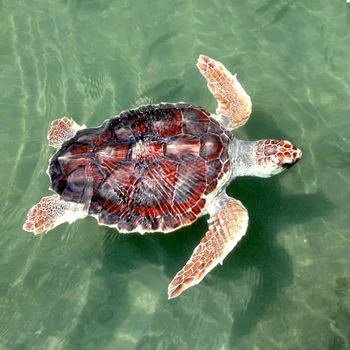 |
34 Turtles You Can Find in Mississippi
In total, there are 34 species of turtles in the state of Mississippi. This guide will take you on an exploration through each turtle type and provide tips for providing them with proper care. So, let’s get started on our journey into discovering all the wonders that these reptiles have to offer!
1. Eastern Box Turtle (Terrapene Carolina)
- Family: Emydidae
- Genus: Terrapene
- Type: Terrestrial turtle
- Natural Habitat: Deciduous and mixed forests, meadows, and fields
- Lifespan: 60 years
- Also Known As: Eastern terrapin
- Maximum Size: 4-10 inches
- Maximum Weight: Male: 1 pounds, females: 2 pounds
- Prone to Diseases: Respiratory infections, shell rot, and other diseases
- Aggression Level: Not aggressive towards humans
- Predators: Raccoons, skunks, opossums, and snakes
- Domestication: Can be kept as pets
The Eastern Box Turtle (Terrapene Carolina) is one of the most intriguing species found in deciduous and mixed forests, meadows, and fields of eastern North America. This incredible turtle can live up to 40 years in the wild or even reach up to 60 years in captivity! With adult sizes ranging from 4-10 inches, males being slightly smaller than females with a weight of 0.5-1 lb for males and 1-2 lbs for females.
Eastern Box Turtles are not too aggressive towards humans but potential predators may include raccoons, skunks, opossums, and snakes. They can be kept as pets but it is important to consult local laws before doing so since some states make it illegal to collect wild turtles or sell them as pets—including Mississippi. Captive Eastern Box Turtles may be prone to respiratory infections, shell rot, and other diseases common to captive turtles.
This species is state-protected in several states due to the declining population caused by habitat loss and illegal collection for the pet trade. Despite this precarious situation, Eastern Box Turtles can still be found in eastern North America—including Mississippi. It is essential that we take steps to protect this species which calls Mississippi home by preserving their natural habitats as well as improving public awareness of their plight!
2. Gulf Coast Box Turtle (Terrapene Carolina Major)
- Family: Emydidae
- Genus: Terrapene
- Type: Terrestrial/semi-aquatic turtle
- Natural Habitat: Coastal plain forests, pine flatwoods, and dune habitats along the gulf coast
- Lifespan: 50 years
- Maximum Size: 5-7 inches
- Maximum Weight: 2 pounds
- Prone to Diseases: Respiratory infections, shell rot, and parasites
- Aggression Level: Not aggressive
- Predators: Foxes, raccoons, and skunks
- Domestication: Yes, can be kept as a pet
Introducing the majestic Gulf Coast Box Turtle, one of the many incredible species native to Mississippi. Growing up to 7 inches in length and weighing around 2 pounds, this terrestrial/semi-aquatic creature prefers coastal plain forests, pine flatwoods and dune habitats along the Gulf Coast.
These stunning turtles have a lifespan that can reach up to 50 years if left undisturbed by its predators like foxes, raccoons or skunks. They are particularly adapted for land living but will occasionally enter water sources such as ponds or streams in order to bask.
Sadly enough though they are listed as threatened species in Florida due to human activities which puts them at risk of extinction unless preventative steps are taken soon. Let’s strive towards preserving its population so future generations can marvel atMississippi’s natural beauty!
3. Three-toed Box Turtle (Terrapene Carolina Triunguis)
- Family: Emydidae
- Genus: Terrapene
- Type: Semi-aquatic turtle
- Natural Habitat: Humid areas such as marshes and grassy lands
- Lifespan: 30 – 40 years
- Maximum Size: 5 – 7 inches
- Maximum Weight: Up to 2 pounds
- Prone to Diseases: Clinical mycoplasma infections, mbd
- Disease Carrier: Salmonella
- Aggression Level: Not aggressive
- Predators: Mammals, such as raccoons, muskrats, birds and large fishes.
- Domestication: Illegal to possess without permit in most states
This remarkable reptile inhabits deciduous forests, grasslands, and wetlands across parts of the eastern and central United States including Mississippi.
Its average length is 4.5 to 5.5 inches while its weight averages between 0.5 to 1 pound with no size or gender differences seen in adults. Although they are mild by nature, these reptiles need proper care and maintenance if kept as pets – some states like Florida have even put restrictions on owning them as a pet!
Fortunately, their strong shells protect them from predators like snakes, raccoons, and skunks; however human activities such as habitat destruction have resulted in this species being listed as a special concern in some states due to the loss of habitats.
4. Chicken Turtle (Deirochelys Reticularia)
- Family: Emydidae
- Genus: Deirochelys
- Type: Freshwater turtle
- Natural Habitat: Freshwater wetlands, rivers, and ponds
- Lifespan: 40 years
- Maximum Size: 9 inches
- Maximum Weight: 2 pounds
- Prone to Diseases: Respiratory infections
- Aggression Level: Mild
- Predators: Raccoons, herons, and other predators
- Domestication: Can be kept as a pet
The Chicken Turtle is a beautiful species of freshwater turtle native to wetlands, rivers and ponds across much of the Eastern United States. These turtles may reach up to 9 inches in length when fully grown, with no distinction between male and female sizes; they can weigh up to 2 pounds. They have a lifespan of up to 40 years and are mildy aggressive, biting if threatened or provoked.
Chicken Turtles have distinctive markings on their shells; the plastron may be cream colored while the carapace has yellow spots with brown or black borders outlined in white.
Although they do not suffer from endangerment as such, these turtles are listed as species of special concern in some states including Mississippi. Given proper care and attention this species can thrive as pets but require large enclosures for basking purposes along with specialized diet for optimal health that should include live food like worms or other bugs.
The Chicken Turtle is an excellent swimmer due its long feet and webbed toes which allow it to stay underwater for longer periods of time than many other turtle species.
5. Alabama Red-bellied Turtle
- Family: Emydidae
- Genus: Pseudemys
- Type: Terrestrial and aquatic turtle
- Natural Habitat: Inland waterways, rivers, and streams in the southeastern united states, especially in alabama and georgia
- Lifespan: Up to 30 years
- Maximum Size: 9-11 inches
- Maximum Weight: 2-3 pounds
- Aggression Level: Not aggressive
- Predators: Raccoons, herons, and other birds
- Domestication: Can be kept as a pet
The Alabama Red-bellied Turtle (Pseudemys Albemarli) is an aquatic and semi-aquatic species of turtle native to the inland waterways, rivers, and streams of the southeastern United States, particularly in Alabama and Georgia. Adults can grow up to 9-11 inches in length and weigh 2-3 pounds. These turtles that inhabit Mississippi can live up to 30 years in the wild. This species is known for its distinct red belly that gives it its name.
The Alabama Red-bellied Turtle prefers slow moving bodies of water but they can also be found on land near the edge of their habitat. They are not aggressive towards humans and make excellent pets with proper care and consideration of their needs; however, some states like California have restrictions on owning native turtle species as pets so it’s always best to check the specific laws and regulations of your state or municipality before owning one.
Predators such as raccoons, herons, and other birds prey on young turtles; however as adults they are relatively safe from predation. Though not listed as endangered populations in some areas have declined due to habitat loss or collection for the pet trade in Mississippi. The Alabama Red-bellied Turtle is an excellent addition to any tank set up due to its unique coloring and patterning on its carapace that makes it an interesting conversation piece.
6. Eastern River Cooter (Pseudemys Concinna)
- Family: Emydidae
- Genus: Pseudemys
- Type: Freshwater turtle
- Natural Habitat: Slow-moving rivers, swamps, and other aquatic environments
- Lifespan: 30 years
- Maximum Size: 11 inches
- Maximum Weight: 8 pounds
- Prone to Diseases: Respiratory infections, shell rot, and parasites
- Aggression Level: Not known to be aggressive
- Predators: Raccoons, foxes, etc.
- Domestication: Can be kept as pets
The Eastern River Cooter (Pseudemys concinna) is a beautiful freshwater turtle found in the southeastern United States, including states such as Alabama, Georgia, South Carolina, North Carolina and Florida. With its wide flat shell adorned with striking markings of yellow and red it’s certainly an impressive sight to behold.
These unique creatures typically grow up to 10-15 inches in length; males usually being smaller than females. They have strong webbed feet and streamlined shells that make them exceptionally adapted to aquatic environments like slow-moving rivers, swamps, and lakes of Mississippi. In the wild they can live up to 30 years but if well looked after they can reach 20 or more years in captivity; making them attractive pet options for those looking for long term companionship.
Their natural habitats however are under threat due to human activity so by protecting their environment we can help ensure that this stunning species remain part of our ecosystem for many generations in Mississippi.
7. Diamondback Terrapin (Malaclemys Terrapin)
- Family: Emydidae
- Genus: Malaclemys
- Type: Aquatic turtle
- Natural Habitat: Coastal salt marshes and brackish waterways along the atlantic and gulf coasts of the united states
- Lifespan: 20 years
- Maximum Size: 11 inches
- Maximum Weight: Male: 11 ounces, females: 18 ounces
- Prone to Diseases: Shell rot and respiratory infections
- Aggression Level: Mildly aggressive when threatened
- Predators: Raccoons, otters, foxes, and birds of prey
- Domestication: Can be kept as a pet
The Diamondback Terrapin, native to the brackish waterways of the Atlantic and Gulf coasts in states such as Maryland, Virginia, North Carolina, South Carolina, Georgia, Florida, Louisiana and Alabama is a species worth noting.
With lifespans up to 20 years and adult sizes ranging from 8-9 inches in length with some reaching 11 inches this turtle is not one to be missed. Despite its mild aggression when threatened due to predators such as raccoons and otters it still belongs here in Mississippi.
However it is important if you are considering owning one as a pet that you check local laws first as regulations do vary state by state. Although they are well adapted to their brackish water environments they can be prone diseases like shell rot or respiratory infections so special care needs must be taken when kept captive.
Habitat loss or harvest for commercial trade have caused vulnerability in the species which makes them vulnerable to extinction -so please enjoy these remarkable creatures responsibly here at Mississippi.
8. Black-knobbed Map Turtle (Graptemys Nigrinoda)
- Family: Emydidae
- Genus: Graptemys
- Type: Terrestrial/aquatic turtle
- Natural Habitat: Inland waterways, rivers, swamps, and oxbow lakes
- Lifespan: 25-30 years
- Maximum Size: 9 inches in carapace length
- Prone to Diseases: Shell rot and respiratory infections
- Aggression Level: Not usually aggressive
- Predators: Raccoons, skunks, and birds of prey
- Domestication: Can be kept as pets
The Black-knobbed Map Turtle can reach up to 9 inches in carapace length as adults with males typically being smaller than females. These turtles are strong swimmers and breathe through both their gills and lungs.
Black-knobbed map turtles are generally not considered an aggressive species but they do have a few natural predators including raccoons, skunks and birds of prey. They can be kept as pets in Mississippi if given proper care and attention but there may be restrictions in certain areas. In captivity these turtles may be prone to shell rot or respiratory infections if not maintained in optimal conditions.
The Black-knobbed Map Turtle is not endangered but their populations in some areas are declining due to habitat destruction and illegal collection for the pet trade. It is important for conservation efforts to be taken in order to protect this species throughout its range in Mississippi so that future generations can enjoy its presence in inland waterways.
9. Mississippi Map Turtle (Graptemys Pseudogeographica Kohnii)
- Family: Emydidae
- Genus: Graptemys
- Type: Freshwater turtle
- Natural Habitat: Mississippi river basin in the united states, in large rivers, lakes, and swamps, with mud or sandy bottoms and abundant aquatic vegetation
- Lifespan: 30 years
- Maximum Size: Males: 7 inches, females: 12 inches
- Maximum Weight: Males: 1 pounds, females: 2 pounds
- Prone to Diseases: Respiratory infections, shell rot, and metabolic bone disease
- Aggression Level: Mildly aggressive
- Predators: Large fish and raccoons
- Domestication: Can be kept as pet
The Mississippi Map Turtle (Graptemys pseudogeographica kohnii) is a unique freshwater turtle native to the Mississippi River Basin. They can be found in large rivers, lakes, and swamps with mud or sandy bottoms and plenty of aquatic vegetation.
Males typically reach 5-7 inches in length, while females can grow up to 8-12 inches. The males generally weigh 200-400 grams, and females can weigh up to 1 kilogram. Although they are not aggressive towards humans and rarely bite, it is important to observe them from a respectful distance if spotted in their natural environment – particularly around Mississippi where they inhabit.
Mississippi Map Turtles are sometimes kept as pets but require proper care and housing if taken into captivity. Inadequate nutrition, poor ventilation or unclean environments may cause respiratory infections or shell rot.
Since they spend much of their time in the water, they have webbed feet in order to swim quickly and dive deep when necessary. Unfortunately, populations in some areas are declining due to habitat destruction and over-collection for the pet trade despite them not being listed as an endangered species.
In addition to the Mississippi River Basin itself, these fascinating creatures have also been observed throughout Illinois, Iowa, Missouri, Tennessee, Arkansas, Kentucky – and possibly Alabama, Indiana and Ohio as well! If you find yourself exploring Mississippi, keep your eyes open for this stunning species – you might just get lucky!
10. Northern Map Turtle (Graptemys Geographica)
- Family: Emydidae
- Genus: Graptemys
- Type: Aquatic turtle
- Natural Habitat: Rivers, streams, and large ponds in the northern united states
- Lifespan: 20+ years
- Also Known As: Common map turtle
- Maximum Size: Males: can reach up to 6 inches, females: can reach up to 10 inches
- Maximum Weight: Males: 150-400 gm, females: 1.5-5.5 pounds
- Prone to Diseases: Contaminants due to the diet habit
- Aggression Level: Not aggressive
- Predators: Racoons, coyotes and skunks
- Domestication: Can be kept as pet
The Northern Map Turtle (Graptemys geographica) is a species of aquatic turtle native to the rivers, streams and large ponds in the northern United States. They can reach up to 10 inches in carapace length with male size being smaller than female. Adults don’t have many natural predators but juveniles are preyed upon by birds, mammals and larger fish.
These strong swimmers have an excellent carapace for protection from danger and they can live up to 20-25 years if properly cared for! Given their beautiful markings, it’s no surprise that these turtles are becoming increasingly popular as pets – just remember they must be treated with care and may require permits depending on the state, including Mississippi. They’re also prone to respiratory infections when kept in captivity so it’s important to monitor them closely.
Luckily, this majestic species isn’t endangered yet – though population numbers may be decreasing rapidly in certain areas. The Northern Map Turtles can are easily found living around Illinois, Indiana, Iowa, Michigan, Minnesota, Missouri, Ohio, and Wisconsin among other US states!
11. Ouachita Map Turtle (Graptemys Ouachitensis)
- Family: Emydidae
- Genus: Graptemys
- Type: Aquatic turtle
- Natural Habitat: Slow-moving freshwater rivers, streams, and lakes
- Lifespan: 30 – 50 years
- Also Known As: Sawback
- Maximum Size: Males: 3 to 6.5 inches, females: 4.0 to roughly 11 inches
- Maximum Weight: 1.5 – 4.5 pounds
- Prone to Diseases: Shell rot, respiratory infections
- Disease Carrier: Salmonella
- Aggression Level: Not aggressive
- Predators: Raccoons, skunks, and foxes
- Domestication: Can be kept as pet
Have you ever seen the magnificent Ouachita Map Turtle (Graptemys ouachitensis)? This freshwater turtle is found in slow-moving rivers, streams, and oxbow lakes in Arkansas and Oklahoma.
With adult sizes measuring 8-11 inches in length, these turtles make for a great pet – though it’s important to check local regulations as Mississippi may have different restrictions when it comes to owning a turtle.
They are not aggressive by nature but can fall prey to predators like raccoons and otters or even large fish or birds of prey on occasion. When cared for properly, these turtles can live up to 20-30 years!
12. Pascagoula Map Turtle (Graptemys Gibbonsi)
- Family: Emydidae
- Genus: Graptemys
- Type: Aquatic turtle
- Natural Habitat: Rivers, streams, and lakes
- Lifespan: Estimated up to 30 years
- Maximum Size: Males: roughly 5 inches, females: 11+ inches
- Maximum Weight: 7+ pounds
- Prone to Diseases: Shell rot, respiratory infections
- Aggression Level: Aggressive
- Predators: Otters, large fish, birds of prey
- Domestication: Can be kept if collected from legal turtle breeders
These unique turtles are found in slow-moving rivers, streams, and oxbow lakes with sandy or muddy bottoms in Mississippi and Louisiana. They can make great pets for the right person – but before taking one home to Mississippi, be sure to check your local regulations!
Standing at an impressive 5.5 inches for males and 8 inches for females, these incredibly long living aquatics can live up to 25 years with proper care. Most notably they have excellent swimming capabilities as well as strong webbed feet suitable for digging into sand or mud.
Though generally not aggressive towards humans, their population has unfortunately decreased due to habitat loss and degradation making them a species of special concern. If you’re looking for something interesting and different these confident critters may just be the perfect addition to your family!
13. Pearl River Map Turtle (Graptemys Pearlensis)
- Family: Emydidae
- Genus: Graptemys
- Type: Aquatic turtle
- Natural Habitat: Creeks, rivers, and lakes
- Lifespan: 30 years
- Also Known As: Pascagoula map turtle
- Maximum Size: Males: 121mm, females: 296mm
- Maximum Weight: 0.700 – 7+ pounds
- Prone to Diseases: Shell rot, respiratory infections
- Aggression Level: Females are often agrressive toward males
- Predators: Large fishes, birds of prey, raccoons
- Domestication: Listed as endangered
Greeting from Mississippi! Travelling here we find the majestic Pearl River Map Turtle, an aquatic reptile that calls this river system home. These turtles have a carapace length of up to 12 inches for females and 6 inches for males and can live in the wild for up to 30 years.
Shy creatures by nature, these turtles do not often bite humans but do have predators such as birds of prey or raccoons. As they are protected species in their native range, it is recommended against keeping them as pets – be sure to check your local regulations before acquiring one!
Lastly, due to habitat loss and illegal collecting Pearl River Map Turtles are considered threatened so please respect their environment when you spot them around here.
14. Ringed Map Turtle (Graptemys Oculifera)
- Family: Emydidae
- Genus: Graptemys
- Type: Aquatic turtle
- Natural Habitat: Wide rivers, with either a clay or sandy bottom, that have moderate to strong currents
- Lifespan: Around 30 years
- Also Known As: Ringed sawback
- Maximum Size: Males: 4 inches, females can get up to 8 inches
- Maximum Weight: Males weigh around 1 pound, females weigh 1.5 – pounds
- Prone to Diseases: Chronic shell abnormalities
- Aggression Level: Larger females are aggressive towards to any smaller turtles placed within same domain
- Predators: Raccoons, armadillos, and fish crows
- Domestication: Not suitable choice for a pet, but it can be kept as pet
The Ringed Map Turtle, Graptemys Ouachitensis, is an incredible reptile found in Mississippi. Growing up to 9-12 inches long for females and 4-7 inches long for males, these turtles can live between 20 – 40 years when cared for properly.
Unlike many of its aquatic relatives, the Ringed Map Turtle is a relatively docile creature with low aggression towards humans; making them desirable as pets. However it’s illegal to keep this species as a pet in some states hence potential owners should always check the laws regarding their procurement first.
Found primarily in rivers, lakes and ponds they have adapted superbly to aquatic environments and thanks to their resilience they are far from endangered yet still threatened by human activities such as habitat loss. By ensuring that we do our part in respecting their habitats we can allow future generations to marvel at these majestic creatures!
15. Yellow-blotched Map Turtle (Graptemys Flavimaculata)
- Family: Emididae
- Genus: Graptemys
- Type: Freshwater turtles
- Natural Habitat: Rivers, lakes, freshwater ponds
- Lifespan: 30 – 50 years
- Also Known As: Yellow-blotched sawback
- Maximum Size: Between 3 and 5 inches for males, between 6 and 9 inches for females
- Maximum Weight: 0.3 – 1.2 pounds
- Disease Carrier: Salmonella
- Predators: Fish, crows, feral pigs, fire ants, snakes, raccoons, armadillos, gray foxes
- Domestication: Can be pet, but not recommended
The extraordinary Yellow-blotched Map Turtle (Graptemys flavimaculata) is a freshwater species native to Mississippi. These turtles usually measure between 3 and 9 inches in size, with males being slimmer than females, and can weigh up to 1.2 pounds. They have a distinct yellow markings on the blotches along their shells which give them their name.
This unique reptile is often found inhabiting rivers, lakes, and ponds near the Pascagoula River region in southeastern Mississippi – making it an endangered species due to its limited range. Though they appear docile with humans, these reptiles may become aggressive towards each other when defending mates or resources of food and territory within captivity – elsewhere they face threats from predators such as fish, crows, feral pigs and even snakes!
Additionally, caution should be taken since the turtle can act as a carrier for Salmonella bacteria too. But until they find proper protection against ruthless hunters or natural predators, this remarkable creature will continue disappearing from our planet’s fragile ecosystem.
16. Eastern Mud Turtle (Kinosternon Subrubrum)
- Family: Kinosternidae
- Genus: Kinosternon
- Type: Mud turtle
- Natural Habitat: Freshwater wetlands, swamps, and slow-moving streams
- Lifespan: 30 years
- Maximum Size: 5 inches
- Maximum Weight: 9.27 ounces
- Aggression Level: Low
- Predators: Raccoons, snakes, and birds of prey
- Domestication: Not suitable as a pet
The Eastern Mud Turtle (Kinosternon subrubrum) is a small freshwater turtle found in the southeastern United States, including Mississippi. This species of turtle is known for its highly aquatic adaptations and webbed feet, which make it well-suited to life in slow-moving streams, swamps, and wetlands. The Eastern Mud Turtle can reach up to 5 inches in length and has a maximum weight of 9.27 ounces. It is not aggressive, but may bite if provoked—so exercise caution when near any wild turtles!
The diet of the Eastern Mud Turtle consists primarily of aquatic invertebrates such as snails, worms, and insects. They are also opportunistic scavengers, meaning they will take advantage of carrion when available. Predators of this species include raccoons, snakes, and birds of prey. The lifespan of these turtles is up to 30 years in the wild and due to their abundance across the southeastern United States are not listed as threatened or endangered.
Although they do not make suitable pets due to their size and temperament being unsuitable for captivity, taking care to observe local wildlife regulations is important when interacting with wild Eastern Mud Turtles in Mississippi . Taking steps such as preserving their natural habitats helps protect this species from destruction or poaching—ensuring they remain an iconic part of our environment for many more years to come!
17. Mississippi Mud Turtle (Kinosternon Subrubrum)
- Family: Kinosternidae
- Genus: Kinosternon
- Type: Semi-aquatic turtle
- Natural Habitat: Lives close to stagnant or slow-moving water bodies such as swamps, ponds, ditches and oxbow lakes, preferring shallow, soft-bottomed areas with vegetation. seems to steer clear of fast-flowing rivers.
- Lifespan: 15 and 20+ years
- Maximum Weight: 10 to 35 pounds
- Prone to Diseases: Vitamin a deficiency, respiratory diseases, abscesses, shell infections and fractures, and parasites
- Disease Carrier: Salmonella
The Mississippi Mud Turtle that inhabits Mississippi is a semi-aquatic turtle found near a variety of slow-moving water bodies such as swamps, ponds, and ditches. They can weigh anywhere between 10 to 35 pounds and live up to 20+ years in the wild if they manage to dodge any human-introduced danger.
It has an amazing defense mechanism: its strong shell allows it to protect itself from potential predators in their natural environment, while their salmonella carrier status makes handling them not recommended! While they can be kept as pets, proper care must be taken as they’re prone to some diseases like Vitamin A deficiency, respiratory diseases, abscesses and more.
With conservation efforts, future generations will get the chance to marvel over this magnificent reptile living harmoniously within nature.
18. Common Musk Turtle (Sternotherus Odoratus)
- Family: Kinosternidae
- Genus: Sternotherus
- Type: Terrestrial and aquatic turtle
- Natural Habitat: Streams, rivers, ponds, and swamps in eastern north america
- Lifespan: 10-20 years
- Also Known As: Stinkpot
- Maximum Size: 4-8 inches
- Maximum Weight: 0.7 pounds
- Prone to Diseases: Respiratory infections and shell rot
- Aggression Level: Agressive but not known to bite humans
- Predators: Raccoons, mink, birds of prey, and large fish
- Domestication: Can be kept as pets
The Common Musk Turtle (Sternotherus Odoratus) is a terrestrial and aquatic turtle found in streams, rivers, ponds, and swamps throughout the eastern United States. This species can reach an impressive length of 4-8 inches when fully grown, with an average weight of 0.7 pounds. Interestingly, these turtles are also known as ‘Stinkpots’ due to their ability to secrete a musky odour when alarmed or threatened.
Their flat carapace makes them well adapted for life in the water, with strong webbed feet and sharp claws helping them cling onto rocks or vegetation while searching for food. As omnivores they feed on snails, clams and other insects as well as plant matter such as algae and leaves – making them a vital part of the local ecosystem here in Mississippi. They are generally non-aggressive but may bite if disturbed or threatened by predators such as river otters, raccoons, mink and birds of prey.
The Common Musk Turtle is not currently listed as an endangered species but habitat loss due to human activities such as development and pollution can lead to a decrease in population numbers – especially without proper conservation efforts. Additionally, illegal pet trade can be an issue that affects their vulnerability so it’s important to check local regulations before acquiring this species as a pet.
Despite all this however, with proper care these turtles have been known to live up to 20 years making them great companions for experienced keepers who are willing to put in the effort necessary for their special care needs here in Mississippi.
19. Loggerhead Musk Turtle (Sternotherus Minor)
- Family: Kinosternidae
- Genus: Sternotherus
- Type: Semi-aquatic turtle
- Natural Habitat: Freshwater rivers, streams, and ponds in the southeastern united states
- Lifespan: 30 years
- Maximum Size: 3 to 4.5 inches
- Aggression Level: Not considered aggressive towards humans
- Predators: Raccoons, foxes, and other large mammals, birds of prey
- Domestication: Not recommended as a pet
The Loggerhead Musk Turtle (Sternotherus Minor) is a remarkable creature found in the freshwater environments of the southeastern United States. This little reptile that calls Mississippi its home reaches an adult size of 3 to 4.5 inches and lives up to 30 years old, making it one of the longest-lived species in its family. Its semi-aquatic nature makes it well adapted to life in the water, where it prefers habitats such as rivers, streams, and ponds.
The Loggerhead Musk Turtle is known for its distinctive markings, featuring a yellowish/brown carapace with dark spots along its ridges and a light yellow plastron on its underside. It is a docile creature that tends to be shy around people, although they may become aggressive towards each other when crowded in tight spaces. This species is not a pet, but may be regulated by state and local laws; therefore it is recommended to check with local authorities before owning one as a pet.
Sadly, this species has experienced population declines due to habitat loss caused by human activities as well as predation from larger mammals such as raccoons or foxes and birds of prey. Fortunately, it has not been listed as threatened or endangered so far which gives us hope for future conservation efforts here in Mississippi. We must work together now to protect this remarkable species for future generations to appreciate its beauty!
20. Razor-backed Musk Turtle (Sternotherus Carinatus)
- Family: Kinosternidae
- Genus: Sternotherus
- Type: Aquatic turtle
- Natural Habitat: Heavily vegetated shallow ponds, slow moving water swamps, and streams
- Lifespan: 20 – 40 years
- Also Known As: Carinated musk turtle
- Maximum Size: Roughly 6 inches
- Maximum Weight: 0.5 to 1 pound
- Prone to Diseases: Vitamin diseases, abscesses, shell infections and fractures, and parasites
- Aggression Level: Aggressive
- Predators: Raccoons, skunk, fox, birds of prey, bullfrogs. largemouth bass, alligators
- Domestication: Popularly kept as pets
The Razor-backed Musk Turtle (Sternotherus carinatus) is a unique species of reptile found across Mississippi. This small but powerful creature can reach up to 5-7 inches in length, with males being smaller than females.
It has webbed feet and the ability to hold its breath for long periods, making it well suited to life in freshwater rivers, swamps and streams.
Though mildly aggressive, it rarely bites humans if feeling threatened. Unfortunately wild populations have been impacted by habitat loss and hunting so we must respect their natural habitats if we want them to survive for generations more to come! Let’s make sure this remarkable animal continues thriving in Mississippi.
21. Stripe-necked Musk Turtle (Sternotherus Minor peltifer)
- Family: Kinosternidae
- Genus: Sternotherus
- Type: Aquatic turtle
- Natural Habitat: Creeks, springs, ponds, rivers, and wetlands
- Lifespan: 70+ years
- Maximum Size: 3 – 4 inches
- Maximum Weight: Barely gets 1 pound
- Prone to Diseases: Mollusks oxytrema simplex and pleurocera unciale
- Disease Carrier: Salmonella
- Aggression Level: The chinese stripe-necked turtle is a competitive species, dominating other turtles for resources and habitat. only one specimen has ever been discovered in the wild in australia, specifically in toowoomba in 2014.
- Predators: Large fish, raccoons, foxes, skunks, and big wading birds all fall under the category of common wildlife
- Domestication: Endangered species, can’t be kept as pets
The Stripe-necked Musk Turtle is a unique species found in freshwater environments such as slow-moving streams, ponds, swamps, and other habitats. These turtles typically range from 4 to 6 inches long and can live up to 25 years when given the right care and environment.
They have webbed feet for swimming which gives them a streamlined shape that makes it easy for them to move through the water quickly – an adaptation that proves useful against predators like raccoons or herons!
These docile creatures make great companions when kept as pets but you must check Mississippi’s specific laws before doing so.
Even though not all populations of these amazing animals are endangered yet, their numbers have been declining across Mississippi due to rapid habitat loss or exploitation – something we should pay close attention to if we wish to ensure this special creature has a secure future ahead!
22. Southern Painted Turtle (Chrysemys picta)
- Family: Emydidae
- Genus: Chrysemys
- Type: Aquatic turtle
- Natural Habitat: Likes bodies of water with soft mud floors and abundant aquatic plants, e.g. rivers, lakes, wetlands, oxbows, ponds, ditches, and reservoirs.
- Lifespan: Usually 20 – 30 years, but in better habitat can live up to 50 years
- Maximum Size: 4 – 6 inches
- Maximum Weight: Gets about 1 pound
- Prone to Diseases: Vitamin deficiencies, metabolic bone disease, and intestinal parasites
- Disease Carrier: Salmonella
- Aggression Level: Aggressive baskers
- Predators: Raccoons, skunks, foxes, herons, other birds, snakes, and large predaceous fish
- Domestication: Can be kept as pets
The Southern Painted Turtle (Chrysemys Picta) is one of the most recognizably patterned freshwater turtles native to Mississippi. These aquatic reptiles can be found in wetland habitats such as ponds, streams and slow-moving rivers. Adults typically reach a length between 4.5 to 10 inches – with females being larger than their male counterparts while they also maintain an impressive lifespan of up to 30 years!
These turtles have webbed feet, streamlined shells and retractable heads that provide them with excellent adaptations for swimming along with protection from predators. Among such predators are crows, raccoons, skunks, herons – and even larger fish that pose a threat if populations become too large.
Although these animals are not considered endangered species overall, some populations may be declining due to habitat loss or exploitation so it’s important for us all to do our part in preserving them where possible. As for those considering keeping them as pets? Please check local regulations first before taking any turtle home!
23. Red Eared Slider (Trachemys Scripta Elegans)
- Family: Emydidae
- Genus: Trachemys
- Type: Aquatic turtle
- Natural Habitat: Streams, rivers, ponds, lakes, swamps, and marshes
- Lifespan: 20 – 30 years
- Also Known As: Red-eared terrapin
- Maximum Size: 7 – 12 inches, females get larger than 12 inches
- Maximum Weight: 3 – 6 pounds
- Prone to Diseases: Respiratory infections, shell rot, and other diseases if kept in unsanitary conditions.
- Disease Carrier: Salmonella
- Aggression Level: Not aggressive
- Predators: Raccoons, otters, fish, frogs, snakes, skunks and birds
- Domestication: Can be kept as pets
The Red Eared Slider (Trachemys scripta elegans) is a freshwater reptile with a striking appearance. Found in Mississippi’s waterways, these turtles can reach up to 10-12 inches long as adults and can live for an impressive 30 years. They have webbed feet that are adapted for swimming, making them incredibly agile aquatic creatures.
Males and females exhibit different size ranges, with males being more diminutive compared to the females and juveniles measuring only 2-3 inches when fully grown. Although they may take on aggressive postures if threatened, their bite force is not enough to cause any damage to humans or other larger animals.
It’s important that we respect the habitats of these amazing reptiles so that future generations will be able to enjoy them too – keep their environments clean by disposing of garbage properly and avoid disturbing the fragile ecosystems where they make their homes!
24. Yellow-bellied Slider (Trachemys Scripta Scripta)
- Family: Emididae
- Genus: Trachemys
- Type: Freshwater turtle
- Natural Habitat: Slow-moving rivers, floodplain swamps, marshes, seasonal wetlands, and permanent ponds
- Lifespan: 20-30 year
- Maximum Size: 8 – 12 inches
- Maximum Weight: Up to 3 pounds
- Disease Carrier: Salmonella
- Aggression Level: When kept in pairs, yellow-bellied slider turtles may exhibit aggression, unlike their docile behavior when housed individually.
- Predators: Raccoons (procyon lotor) and humans, who shoot them while basking, kill them on roads, and fracture shells with boat propellers. hatchlings and juveniles are eaten by large fish, some snakes, raccoons, and wading birds
Native to the southeastern United States from Florida to Virginia, the Yellow-bellied Slider (Trachemys Scripta Scripta) is a freshwater turtle. These beautifully patterned creatures have yellow shells with black patches around each scute as well as bright yellow bellies, giving them their name. They can measure up to 12 inches long and weigh up to 3 pounds.
In Mississippi, these turtles are found in low-moving rivers, floodplain swamps, marshes, seasonal wetlands and permanent ponds . In the wild they usually lead solitary lives and do not show aggression towards other animals unless kept in pairs when some competition may arise over certain mates.
Sadly raccoons (Procyon lotor) and humans are major threats for these vulnerable reptiles due to disturbance of their habitats or hunting them down for food or sport; juveniles also face even more trouble since they’s likely be eaten by large fish, some snakes, raccoons and wading birds if left unprotected! Conservation efforts need to be increased so that this majestic species will continue inhabiting our planet far into future generations!
25. Alligator Snapping Turtle (Macrochelys Temminckii)
- Family: Chelydridae
- Genus: Macrochelys
- Type: Freshwater turtle
- Natural Habitat: Slow-moving rivers, canals, lakes, and swamps in the southeastern united states
- Lifespan: 60-70 years
- Maximum Size: 30 inches
- Maximum Weight: 220 pounds
- Aggression Level: Moderate
- Predators: Large fish, birds of prey, and humans
- Domestication: Not recommended as pet
The Alligator Snapping Turtle (Macrochelys temminckii) is a large freshwater turtle native to the southeastern United States. Adults can reach up to 30 inches in length and weigh up to 220 pounds. Juvenile alligator snapping turtles are much smaller, usually between 4-10 inches in length. When you’ll come across this species in Mississippi, you’ll notice that it has a very unique appearance, with an oversized head and a spiked tail that looks like an alligator’s claw.
The shell of this turtle is dark brown or black with yellow spots and stripes over it, giving the impression of scales on an alligator’s back.
Alligator snapping turtles are powerful predators and their bite force is strong enough to break through bone. They feed mainly on fish but also consume invertebrates, amphibians, and other turtles. These turtles are ambush predators, waiting for prey to come close before attacking. They are not considered aggressive towards humans but should still be handled with caution as they may bite if startled.
In the wild, alligator snapping turtles can live up to 60-70 years and have few natural predators due to their large size. However, their populations have declined in some areas due to habitat loss, illegal harvesting, and pollution. In order to protect this species from further decline, many states regulate or ban the possession of alligator snapping turtles as pets. Furthermore, it is important that you research the specific laws and regulations of your state or municipality before owning a pet turtle.
26. Common Snapping Turtle (Chelydra serpentina)
- Family: Chelydridae
- Genus: Chelydra
- Type: Freshwater turtle
- Natural Habitat: Freshwater habitats such as lakes, rivers, and swamps
- Lifespan: 50 years
- Maximum Size: 19 inches
- Maximum Weight: 40 pounds
- Prone to Diseases: Fungal infections and shell rot
- Aggression Level: Not aggressive until provoked
- Predators: River otters, bears and coyotes
- Domestication: Not recommended as pets
The Common Snapping Turtle, scientifically known as Chelydra serpentina, is an aquatic species native to freshwater habitats such as lakes, rivers and swamps. These turtles are highly adaptable and can live up to 50 years in the wild.
Adult Common Snapping Turtles typically measure 10-16 inches in shell length but can grow up to 19 inches and weigh around 40 pounds. They have a powerful bite with an estimated pressure of over 600 psi, making them one of the strongest biters among reptiles. Despite their strength they are generally not aggressive animals, though it is best to not provoke them and take caution around them.
Common Snapping Turtles often face threats from predators such as river otters, bears and coyotes when living out in the wild.
Unfortunately, their habitat is also threatened by human activities such as development and pollution which can lead to a decrease in population numbers if conservation efforts are not taken soon here in Mississippi.
Although they make fascinating pets due to their long lifespan of up to 50 years when cared for properly, some states have regulations or restrictions on owning them so check with local authorities before acquiring this species as a pet.
These turtles have webbed feet for swimming and a long tail for propulsion allowing them to move quickly through water which also makes them difficult prey for predators.
Furthermore, although they occupy multiple states across North America from Alabama to Wyoming there is no other name than the Common Snapping Turtle so it’s easy to identify.
It should be noted that this species does not carry any significant disease that can be transmitted to humans yet they may still be prone to diseases like fungal infections or shell rot when kept in unsanitary conditions so proper care must be taken here in Mississippi when considering owning one of these remarkable creatures as a pet.
27. Gulf Coast Smooth Softshell (Apalone Spinifera Aspera)
- Family: Trionychidae
- Genus: Apalone
- Type: Freshwater turtle
- Natural Habitat: Rivers, streams, lakes, and ponds in the gulf coast region of the united states
- Lifespan: 15-20 years
- Maximum Size: 15 inches
- Maximum Weight: 3.5 pounds
- Prone to Diseases: Respiratory infections and shell rot
- Aggression Level: Mild
- Predators: Birds of prey, raccoons, otters, and alligators
- Domestication: Not typically kept as pets
The Gulf Coast Smooth Softshell is an amazing species of fresh water turtle found in the Gulf Coast region of the United States.
These turtles have a unique flat, streamlined body and large webbed feet that are perfect for swimming which makes them adept at navigating rivers, streams, lakes, and ponds of Mississippi. They generally reach 9-11 inches long as adults with males and females having similar weight averaging 3.5 pounds.
Although mild by nature, they can become aggressive if alarmed. They are rarely kept as pets but their population is being reduced due to loss of habitat and water pollution caused by human activities making them vulnerable to extinction unless preventative steps are taken soon! It’s important that we work together to protect our planet’s oceans so future generations.
28. Gulf Coast Spiny Softshell (Apalone Spinifera Aspera)
- Family: Trionychidae
- Genus: Apalone
- Type: Freshwater turtle
- Natural Habitat: Inland waterways and rivers, ponds, and wetlands
- Lifespan: 25-30 years
- Maximum Size: 8-14 inches
- Prone to Diseases: Respiratory and shell infections
- Aggression Level: Mildly aggressive
- Predators: Raccoons, alligators, and birds of prey
- Domestication: Can be kept as pets
The Gulf Coast Spiny Softshell is a freshwater turtle found in the inland waterways and rivers, ponds, and wetlands of Mississippi. It has an impressive lifespan of 25-30 years. They can reach up to 14 inches in carapace length with females larger than males. Despite it’s mild aggression level, they can bite when threatened so please consider state laws before obtaining as a pet.
These reptiles are strong swimmers thanks to their flat streamlined body and large webbed feet allowing them to breathe underwater through their cloacal bursae! Unfortunately some populations have declined due to human activities such as habitat loss, degradation and water pollution but if we act now we can ensure this species thrives for future generations to come.
29. Gopher Tortoise (Gopherus Polyphemus)
- Family: Testudinidae
- Genus: Gopherus
- Type: Terrestrial tortoise
- Natural Habitat: Dry, sandy soils of longleaf pine forests, scrub, coastal dunes, and rocky uplands in the southeastern united states
- Lifespan: 80 years
- Maximum Size: 15 inches
- Maximum Weight: 15 pounds
- Prone to Diseases: Respiratory infections, digestive problems, and shell infections
- Aggression Level: Low
- Predators: Raccoons, feral pigs, armadillos, fire ants, and various bird species
- Domestication: Can be kept as a pet in some states
The Gopher Tortoise (Gopherus Polyphemus) is a remarkable terrestrial species found across Mississippi. With an impressive lifespan of up to 80 years in captivity, adults measure up to 15 inches in length and can weigh around 10-15 pounds. Generally these creatures are quite docile and are not prone to aggression unless provoked or threatened by larger predators such as humans, armadillos, raccoons and birds of prey.
Habitually they live in dry sandy soils such as those found in longleaf pine forests, scrub areas, coastal dunes or rocky uplands. Sadly many states now consider this creature endangered due to their habitat being destroyed through human interference; meaning any attempts to keep these residents of Mississippi as a pet will often require special permits depending on where you live.
Nevertheless with the right care, these incredible animals may still be preserved for generations yet come! So let us commit ourselves towards protecting Gopher Tortoises today so that our future descendants may also have the opportunity witness their stunning beauty!
30. Green Sea Turtle (Chelonia Mydas)
- Family: Cheloniidae
- Genus: Chelonia
- Type: Marine turtle
- Natural Habitat: Coastal waters, bays, lagoons, and shallow seagrass beds in tropical and subtropical oceans
- Lifespan: 80 years
- Also Known As: Green turtle
- Maximum Size: 5 feet
- Maximum Weight: 400 pounds
- Aggression Level: Low
- Predators: Birds, mammals, and large fish
- Domestication: Not suitable as pets
Introducing the majestic Green Sea Turtle, an incredible species that inhabits tropical and subtropical coastal oceans in many parts of the world. These residents of Mississippi can reaching up to five feet in length and weigh around 400 pounds for females.
This marine turtle can live for about 80 years if left undisturbed by humans or predators such as birds, mammals, or large fish.
With flippers adapted for swimming and a streamlined body shape allowing it to hold its breath underwater for long periods at a time, they are highly adapted to navigating in their natural aquatic habitats.
Sadly enough though these creatures are endangered worldwide due to human actions which puts them at risk of extinction unless preventative steps are taken soon. Let’s strive towards preserving its population so future generations can witness Mississippi’s coastlines come alive with the beauty of these magnificent animals!
31. Hawksbill Sea Turtle (Eretmochelys Imbricata)
- Family: Cheloniidae
- Genus: Eretmochelys
- Type: Marine turtle
- Natural Habitat: Tropical and subtropical oceans, coral reefs, lagoons, and rocky coasts
- Lifespan: 30-50 years
- Maximum Size: 24-35 inches
- Maximum Weight: 88-110 pounds
- Aggression Level: Not aggressive towards humans
- Predators: Large fish and birds
- Domestication: Not suitable as a pet
The Hawksbill Sea Turtle (Eretmochelys Imbricata) is an incredible species of marine turtle, native to tropical and subtropical oceans around the world. These beautiful creatures can grow up to 35 inches in carapace length and weigh up to 110 pounds. They are known for their unique beak-like snout which has given them their distinctive name ‘Hawksbill’.
Despite being highly adapted for life underwater, with powerful flippers perfect for swimming and the ability to hold its breath for long periods of time, these turtles face numerous threats from human activities such as hunting, poaching beach destruction and pollution. As a consequence they are classified as endangered by IUCN – The International Union for Conservation of Nature – making it illegal to own one as a pet in many states and countries.
Unfortunately populations have decreased drastically over recent decades due mainly to these pressures but also increasingly due climate change related events such as rising sea levels affecting nesting sites.
We must act now if we want future generations in Mississippi to be able observe this amazing species living peacefully in its natural habitat!
32. Kemp’s Ridley Sea Turtle (Lepidochelys kempii)
- Family: Cheloniidae
- Genus: Lepidochelys
- Type: Aquatic turtle
- Natural Habitat: Freshwater rivers, streams, and ponds
- Lifespan: 20-30 years
- Maximum Size: 30 inches
- Maximum Weight: 110 pounds
- Aggression Level: Not aggressive
- Predators: Raccoons, otters, and large fish
- Domestication: Can be kept as pets
The Kemp’s Ridley Sea Turtle is an aquatic reptile native to the southeastern United States, most commonly found in states such as Alabama, Georgia, and Florida. These majestic creatures that call Mississippi their home have a long and impressive lifespan of up to 20-30 years with adults reaching up to 30 inches in length and 110 pounds in weight, with males being slightly smaller than females.
The Kemp’s Ridley Sea Turtle has adapted perfectly for life underwater; aquatically equipped with webbed feet and able to hold their breath for extended periods of time allowing them to outswim most danger. The webbing on its feet provides an immensely powerful swimming technique whilst their streamlined bodies provide amazing agility beneath the waves.
Their carapace is a beautiful olive green colour that blends into the environment perfectly, so they can go unnoticed when needed. This species also has no specific predators apart from raccoons, otters and large fish seeking them out as food, which makes them quite a safe species compared to other turtles living closer to shorelines.
Unfortunately they are listed as vulnerable due to their low population size; this is mainly caused by humans polluting our oceans and destroying their natural habitat. It’s important that we work together now to preserve our planet’s natural ecosystems so future generations can appreciate its beauty here in Mississippi. This is especially true of this beautiful Kemp’s Ridley Sea Turtle so it may yet be enjoyed long into the future!
33. Leatherback Sea Turtle (Dermochelys Coriacea)
- Family: Dermochelyidae
- Genus: Dermochelys
- Type: Marine turtle
- Natural Habitat: Open ocean and near-shore habitats in warmer regions
- Lifespan: 45 years
- Maximum Size: 6.7 feet
- Maximum Weight: 2,000 pounds
- Aggression Level: Low
- Predators: Birds and other marine animals
- Domestication: Not a pet
The Leatherback Sea Turtle (Dermochelys Coriacea) is one of the most remarkable creatures you can find in the depths of ocean. This majestic creature, also known as simply Leatherback Turtle, has adapted to life at sea by having a streamlined body and flippers that give it an immense advantage for swimming long distances.
It has been known to reach up to 6.7 feet in length and its size can weigh up to 2,000 pounds; thus making this resident of Mississippi one of the largest reptiles on Earth!
This species lives mainly in open ocean habitats with warmer regions such as those around the coasts of California, Florida or Mexico but sometimes ventures near-shore areas looking for food or breeding grounds.
Unfortunately due to human activities like hunting them for their valuable shells or accidental catches while fishing these animals have been classified as endangered (IUCN Red List). We must therefore work together now and take action if we want this species preserved so future generations can enjoy its beauty here in Mississippi.
34. Loggerhead Sea Turtle (Caretta Caretta)
- Family: Cheloniidae
- Genus: Caretta
- Type: Sea turtle
- Natural Habitat: Coastal waters, bays, and estuaries
- Lifespan: 40-50 years
- Maximum Size: 3-3.5 ft
- Maximum Weight: 220-355 pounds
- Prone to Diseases: Fibropapillomatosis and debilitative shell disease
- Aggression Level: Not typically aggressive
- Predators: Juveniles – birds, crabs, and mammals; adults – large marine animals such as sharks
- Domestication: Cannot be kept as pets
The Loggerhead Sea Turtle (Caretta caretta) is a remarkable species found in the coastal waters, bays, and estuaries of the Atlantic and Pacific coasts of the United States, as well as in the Gulf of Mexico. This semi-aquatic creature that roams our state of Mississippi has a unique adaptation – its carapace (top shell) is patterned like the skin of a shark, allowing it to blend perfectly with its environment. A fully grown adult can reach up to 3-3.5 ft in length and weigh up to 400 pounds, though there is virtually no size difference between males and females.
Loggerhead Sea Turtles are highly adapted to their aquatic lifestyle, with webbed feet for navigation and long claws for catching their prey such as insects, snails or fish. They can also hold their breath for extended periods of time and have a specialized streamlined body shape which helps reduce drag while swimming.
Unfortunately, due to destruction of its wetland habitats and other human activities, population declines have been reported in some areas; therefore this species is classified as vulnerable by the IUCN and protected under the Endangered Species Act. So it is important that local authorities be consulted before owning one as they cannot be kept as pets due to their specialized habitat requirements.
Living up to 40-50 years in the wild these gentle creatures rarely show aggression towards humans but should still be respected with caution since they are vulnerable to predation from marine mammals such as sharks or birds and crabs when young.
Final Words
In the state of Mississippi—a place rich in biodiversity—turtles play a significant role; with a variety of species dwelling in its forests, beaches, and rivers.
In this article, we took a closer look at these fascinating creatures (including their natural habitats, lifespan, size and weight, predators, and domesticability). It’s worth noting that, while keeping these turtles as pets is legal; their populations in Mississippi may be declining due to habitat loss and collection for the pet trade.
It is our responsibility to ensure that these turtles remain protected and preserved for future generations to enjoy in the state of Mississippi.
Other Nearby States:

